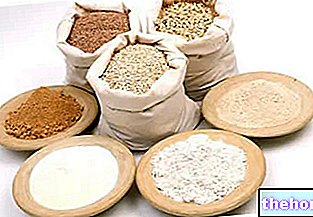Edited by Dr. Loreto Nemi
History of Ketchup
Contrary to what one might think, ketchup is not a product originating in the United States but rather its origins are oriental.
"Ketchup" is a strange word whose origin has not yet been ascertained by linguists.
Some link it to French escabeche which, although it sounds completely different, seems to be the name of a marinade or a cooking sauce. Others think it derives from the Chinese ketsiap or da kecap, from the Malay and Indonesian language, which refers to a brine based on fermented fish mainly based on anchovies.According to a 17th century dictionary, however, catchup is a strong sauce typical of eastern India (in some areas of the US, in fact, ketchup is still spelled "catsup" or "catchup").
The best definition is perhaps that provided by the 1831 edition of the "Domestic Chemist", according to which it is a sauce whose name can be pronounced by anyone but written by no one.
It was around 1600, thanks to English and Dutch sailors that this sauce made itself known also in Europe, and several chefs began to work it, customize it, using various rather diversified ingredients, such as walnuts, lemon, mushrooms, oysters, etc.
The use of tomato in the composition of the sauce seems to date back to about a hundred years later, this time by American industries.
It is 1812 the year of birth of the first tomato ketchup produced by James Mease of Philadelphia who marketed the product.

However, as early as 1801, a cookbook was released on the American market that contained a recipe relating to this sauce, The Sugar House Book, a cookbook.
In 1824 a ketchup recipe was written in another cookbook by Mary Randolph.
The growing appreciation of the American people for tomatoes found wide acceptance, and the sauce was often sold by farmers who took care of the local production of the product.
It was there H. & J. Heinz1 Company to coin the slogan present on the packaging of the product already sold nationwide: Blessed relief for Mother and the other women in the household!
Practically a relief for the housewives and women who took care of cooking, being able to find a ready-made sauce that could save time in their culinary preparations.

In the twentieth century ketchup was in the debate of the authorities for the use of sodium benzoate3 as a preservative, an additive that was then removed from production, as it was considered toxic. The recipe was therefore modified, increasing the quantity of tomato and adding vinegar to mitigate also the exaltation of sweetness due to the elimination of sodium benzoate, which - as well as acting as a preservative - was able to determine a very specific flavor to the sauce.
In the United States, the FDA has prohibited the use of the term ketchup on products that do not comply with production guidelines. In fact, by law, ketchup can only be thickened with whole tomatoes and the viscosity of the sauce must fall within a narrow reference range. Ketchup ingredients are also strictly controlled.
VideoRecipe - Homemade Ketchup
Good ketchup right? Irresistible with chips!
Yes, but when we take a look at the label of some products, doubts begin: preservatives, thickeners, gelling agents and other additives. So is it better to prepare it at home? Of course yes! Here is the video recipe.
Homemade ketchup
Problems with playing the video? Reload the video from youtube.
- Go to the Video Page
- Go to the Video Recipes Section
- Watch the video on youtube
1 As early as 1906, Henry J. Heinz actively supported the return to "genuine nutrition and the banning of artificial colors and preservatives. The use of transparent glass containers for his products was only the beginning. Together with his son" Howard, Henry J. Heinz launched a campaign to get a law passed against the use of artificial preservatives and colors in food products. Most of its competitors were on the other side of the fence. Many of them relentlessly used chemicals and dyes to give their products an enticing look and taste.
2 Complex of polysaccharides (mv 60,000 - 90,000) predominantly polymers of α-D-galacturonic acid whose carboxylic groups are mostly esterified with methanol. Present in the cell walls of plants, they represent the main constituent of the median lamella, the most external cell wall. They are part of the "gel forming" fraction of the fiber and owe their gelling property to the presence of methoxy groups. Pectin together with gums, mucilages, algal polysaccharides, hemicelluloses are part of the non-cellulosic polysaccharides also called soluble fibers or gelling agents While cellulose and lignin are insoluble or hydrophilic fibers.
3 Sodium Benzoate or Benzoic Acid (E210) and its Na, K, Ca salts are preservatives added to ketchup for their antimicrobial action. There are studies by the American FDA according to which, under particular conditions, traces of benzene, a known carcinogen, can be formed in the presence of ascorbic acid.
Other articles on "Ketchup"
- Ketchup: nutritional properties
- Ketchup and healthy eating




























